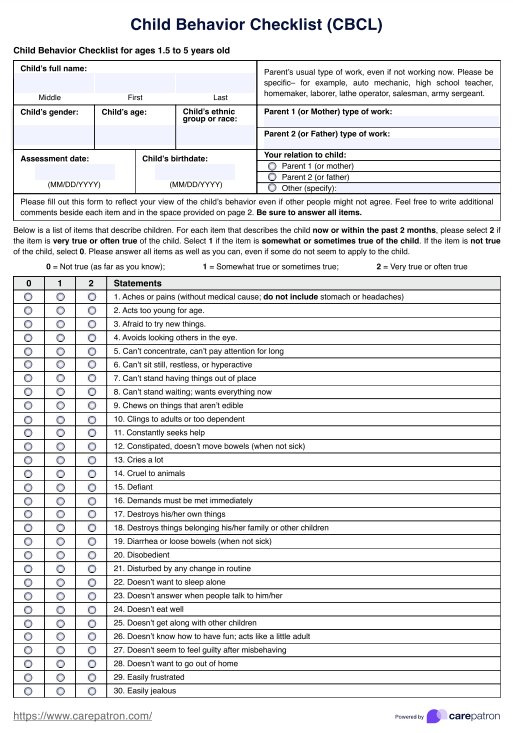The Child Behavior Checklist (CBCL) test is a caregiver-completed assessment used to identify behavioral and emotional problems in children and adolescents. It provides a structured method for reporting a child’s behavior over a specific period, helping clinicians diagnose issues like anxiety, aggression, and conduct disorders.

Child Behavior Checklist (CBCL)
Explore our Child Behavior Checklist (CBCL) to help understand and manage children's behavior effectively and with care.
Child Behavior Checklist (CBCL) Template
Commonly asked questions
The Child Behavior Checklist (CBCL) includes questions that assess a wide range of behaviors, such as rule-breaking behavior, anxiety, aggressive behavior, and somatic complaints. It also covers emotional, social, and behavioral domains, grouped into syndrome scales like internalizing and externalizing problems.
Child Behavior Checklist (CBCL) scores are compared to normative data based on age and gender, with results categorized into normal, borderline, or clinical ranges. Scores above the 97th percentile indicate clinical-level concerns, while those below the 93rd percentile are considered within the normal range.
EHR and practice management software
Get started for free
*No credit card required
Free
$0/usd
Unlimited clients
Telehealth
1GB of storage
Client portal text
Automated billing and online payments











